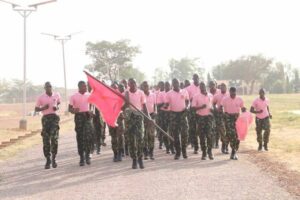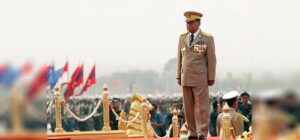
Burma’s Civil war explained the key players and there next move.
1. **Myanmar Military (Tatmadaw)**:
– The Tatmadaw has been the central power in Myanmar since a coup in 1962. It has ruled the country for much of its modern history, and the military ousted the democratically elected government in February 2021.
– The Tatmadaw justifies its actions by claiming electoral fraud in the 2020 election, which saw the National League for Democracy (NLD) win a landslide victory.

– The military seeks to maintain control over the country and its vast resources. It is responsible for heavy violence against ethnic minorities, political dissidents, and protesters.
2. **National Unity Government (NUG)**:
– This is the civilian government formed by elected members of the NLD and other opposition groups following the 2021 coup. The NUG is a pro-democracy group seeking to restore civilian rule and the 2020 election’s results.
– The NUG has garnered some international support, including from Western countries and the United Nations, but has little direct power on the ground.
3. **Ethnic Armed Groups**:
– Myanmar has many ethnic minorities who have been fighting for autonomy or independence for decades. Some of the most significant groups include:
– **Kachin Independence Army (KIA)**: Based in northern Myanmar, the KIA has fought for greater autonomy and rights for the Kachin people.
– **Karen National Union (KNU)**: One of the oldest ethnic groups in Myanmar, the Karen have long sought independence or greater autonomy.
– **Arakan Army (AA)**: Active in Rakhine state, the Arakan Army is fighting for the rights of the Rakhine people, with a focus on securing more autonomy.
– **Shan State Army (SSA)**: Operating in the Shan State, these groups seek autonomy and a greater degree of self-rule.
– These groups have formed alliances with the NUG and other opposition groups to fight the military juntas.
4. **People’s Defense Force (PDF)**:
– The PDF is a guerrilla group formed by civilians who oppose the military regime. It has grown rapidly in response to the brutal crackdown following the coup. The PDF has been involved in fighting across the country, often collaborating with ethnic armed groups.
5. **China and India**:
– Both China and India play strategic roles in Myanmar, though they have different interests. China has been a major ally of the military, providing arms and support, particularly in exchange for access to resources. India has supported some ethnic groups and the NUG, but also seeks to maintain stable relations with Myanmar for its own regional security concerns.
### Current Situation and Next Moves:
– **Myanmar Military (Tatmadaw)**: The military is consolidating its power, using force to suppress protests, resistance groups, and ethnic armed groups. The next move for the Tatmadaw will likely involve continued repression, possibly increasing its military offensives against resistance groups, especially in areas like Karen, Kachin, and Shan states.
– **National Unity Government (NUG)**: The NUG continues to call for international recognition and support, seeking diplomatic leverage. Its next move could be increasing pressure on international organizations to impose further sanctions on the military, while pushing for a more formalized and armed resistance against the junta. They may attempt to form more alliances with ethnic armed groups to create a united front.
– **Ethnic Armed Groups**: These groups are expected to continue their fight for autonomy. Many are already engaged in heavy conflict with the Tatmadaw, and they might increase their collaboration with the PDF and NUG. The next move could involve more coordinated military actions or increased negotiations for political autonomy.
– **People’s Defense Force (PDF)**: The PDF, with support from ethnic armed groups, is likely to continue its guerrilla tactics, focusing on ambushes, sabotage, and hit-and-run tactics against military positions. They could also push for more organized military campaigns.

– **China and India**: Both countries will likely continue to pursue their respective interests in Myanmar, with China supporting the military regime and India cautiously balancing its position. China might increase its economic and military aid to the junta, while India might look for more ways to support resistance forces while maintaining strategic ties.
The situation in Myanmar remains fluid and complex, with the military junta showing no signs of backing down. The next moves by each side will likely escalate the conflict, deepening the humanitarian crisis and extending the civil war.
Leave a Reply